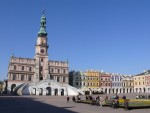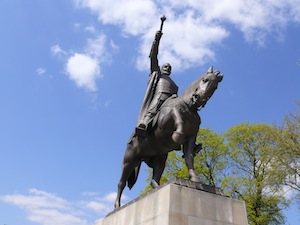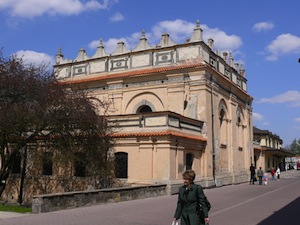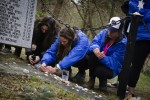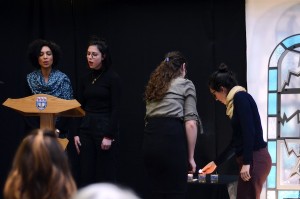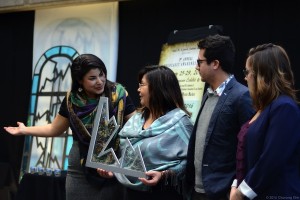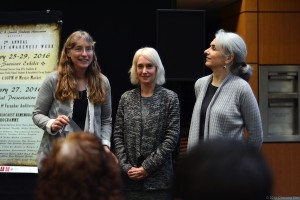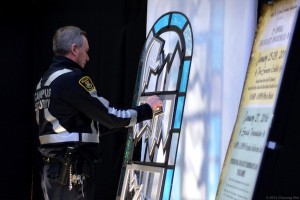Peter Suedfeld and his mother. Taken at Vajdahunyad Castle, Budapest, Hungary, circa 1939/40. (photo from Peter Suedfeld)
Dr. Peter Suedfeld has devoted his life to the study of how human beings adapt to and cope with challenge, stress and danger. Yet it was many years into his work that he acknowledged his choice of academic pursuit may be related to his personal life history as a survivor of the Holocaust.
Suedfeld, professor emeritus of psychology at the University of British Columbia, will deliver the keynote address at the Vancouver Holocaust Education Centre’s community-wide Yom Hashoah commemoration at the Jewish Community Centre of Greater Vancouver on May 4.
Through the years, he has often been asked if his research was influenced by his family’s experience in the Holocaust.
His mother was murdered at Auschwitz; his father survived Mauthausen. Suedfeld was a hidden child in Budapest, living as a Christian in an orphanage run by the International Red Cross.
“My answer always used to be no,” he said, “because my research for a long, long time was fairly straightforward experimental psychology, cognition, perception, memory, things like that.”
But, when he was interviewed for the VHEC’s survivor testimony project, he “put it all together,” he said. “I started to think that maybe there really is a connection, because almost all of my research – not quite all, but most of it – has to do with how people adapt under unusual, extreme, challenging, sometimes traumatic environments and situations.”
His early work focused on sensory deprivation, looking at how removal of external stimuli affects things like cognition, studying astronauts, cosmonauts and people who work in polar research stations.
“I also started looking at people who were under stress because they had to make really important decisions in stressful circumstances, such as political and military leaders,” he said. “I realized that might have had something to do with my own experiences. How do people face unusual, extreme and sometimes dangerous environments – which people who have survived the Holocaust have had to do, including me? But, I want to emphasize that, at the time I was doing this research, I never thought this way. People asked me why I do all these things, and I said something interests me and I do research on it, that’s all, and I have a wide range of interests. But then, I thought maybe this does have something to do with my personal history.”
At the Yom Hashoah event, Suedfeld will reflect on his personal experience, discuss the Holocaust more broadly and then address the issue of the long-term adaptation of survivors of the Holocaust, a topic on which he has conducted a series of studies.
Suedfeld has reviewed the psychological reports written soon after the war about the long-term potential of survivors to survive and thrive.
“In general, what I found is that the early reports of psychologists and psychiatrists about how permanently damaged survivors are were, to put it bluntly, wrong,” he said. “Yes, of course, some people were permanently damaged and some people could never put their life back together again. But there are a lot of people who did put their lives together or build new ones, who were quite resilient and still are, did well in their occupation or in education if they were young when they came here, have family lives that are certainly no less happy than anybody else’s, are proud of their kids and grandkids if they have any, don’t think about the Holocaust all the time, don’t let it ruin their life.”
Many survivors, he said, have some post-traumatic stress, but not post-traumatic stress disorder. “Disorder means it really interferes with normal life,” he said. “And very few have that.”
Reviewing the early literature and knowing what he knows from personal experience and acquaintance with many survivors, Suedfeld is more surprised by the early negative prognoses than by the remarkable resilience of survivors.
“What did surprise me was the negativity of the scientific reports, which overlooked or ignored or never got to see any of the people who were so resilient,” he said. “There is now a substantial and rapidly growing literature showing not only resilience but post-traumatic growth and people’s strength instead of just emphasizing the weakness. And, again, that’s not to deny by any means that there are some people who were so terribly affected that they haven’t recovered, but that is not the norm.”
Suedfeld also cautioned that every experience of survivors is unique.
“We talk about the Shoah as though everybody had pretty much the same experience,” he said. “I want to bring home to people that that is also a mistaken idea, that people experienced very different things, all of which are lumped under the label of Holocaust or Shoah, but that’s an incredibly wide diversity of experiences to which an incredibly wide diversity of people responded in an incredibly wide, diverse way, so you cannot talk about survivors or victims as an undifferentiated lump. They’re not.”
Pat Johnson is a communications and development consultant to the Vancouver Holocaust Education Centre, as well as a member of the Independent’s editorial board. This article first appeared in the VHEC publication Zachor.


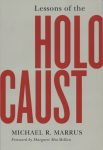
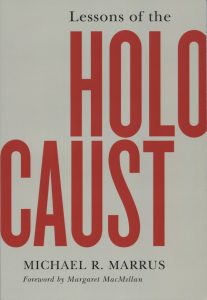
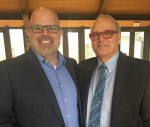
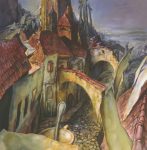
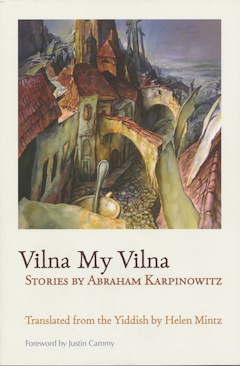 Romantics will appreciate most the linked stories of “The Folklorist” and “Chana-Merka the Fishwife.” In the first tale, Rubinshteyn heads to the Vilna fish market to collect material for YIVO (the Yiddish Scientific Institute) because he knows that, if the “genuine language of the people” is not documented, “it would be a great loss for the culture.” Dedicated to his work, and a dedicated bachelor, he fails to notice that Chana-Merka has fallen in love with him and, once his research is complete, he stops visiting the fish market, much to her – and his – sadness. In the second tale, Chana-Merka heads to YIVO herself to make sure that Max Weinreich, its director, knows from whom all of Rubinshteyn’s material came: she makes lists of curses for Weinreich, such as “May you speak so beautifully that only cats understand you,” and “May you be lucky and go crazy in a more important city than Vilna.”
Romantics will appreciate most the linked stories of “The Folklorist” and “Chana-Merka the Fishwife.” In the first tale, Rubinshteyn heads to the Vilna fish market to collect material for YIVO (the Yiddish Scientific Institute) because he knows that, if the “genuine language of the people” is not documented, “it would be a great loss for the culture.” Dedicated to his work, and a dedicated bachelor, he fails to notice that Chana-Merka has fallen in love with him and, once his research is complete, he stops visiting the fish market, much to her – and his – sadness. In the second tale, Chana-Merka heads to YIVO herself to make sure that Max Weinreich, its director, knows from whom all of Rubinshteyn’s material came: she makes lists of curses for Weinreich, such as “May you speak so beautifully that only cats understand you,” and “May you be lucky and go crazy in a more important city than Vilna.”
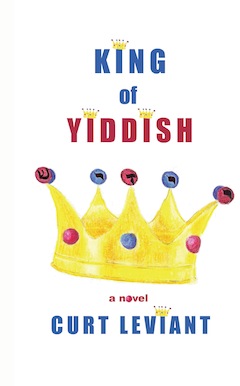 The two stories, solving his father’s murder and getting to the bottom (and the top) of Malina, are interspersed narratives that keep you guessing and entertained. Along the way, the reader encounters a Chassidic un-kosher kidnapping that goes awry (imagine the Marx brothers in black hats) and a bris (kosher or not depending on whether you are Orthodox or Reform) that are grist for Leviant’s mill of linguistic tomfoolery. You meet other academics, letting you in on university rivalries and gossip. Believe it or not, but a cookie with an incredible miniature topping in a Vienna café is an important character in the plot development that might have been written by Kafka, Borges or Nabokov, but it is pure Leviant, plying his considerable art as a fabulist.
The two stories, solving his father’s murder and getting to the bottom (and the top) of Malina, are interspersed narratives that keep you guessing and entertained. Along the way, the reader encounters a Chassidic un-kosher kidnapping that goes awry (imagine the Marx brothers in black hats) and a bris (kosher or not depending on whether you are Orthodox or Reform) that are grist for Leviant’s mill of linguistic tomfoolery. You meet other academics, letting you in on university rivalries and gossip. Believe it or not, but a cookie with an incredible miniature topping in a Vienna café is an important character in the plot development that might have been written by Kafka, Borges or Nabokov, but it is pure Leviant, plying his considerable art as a fabulist.